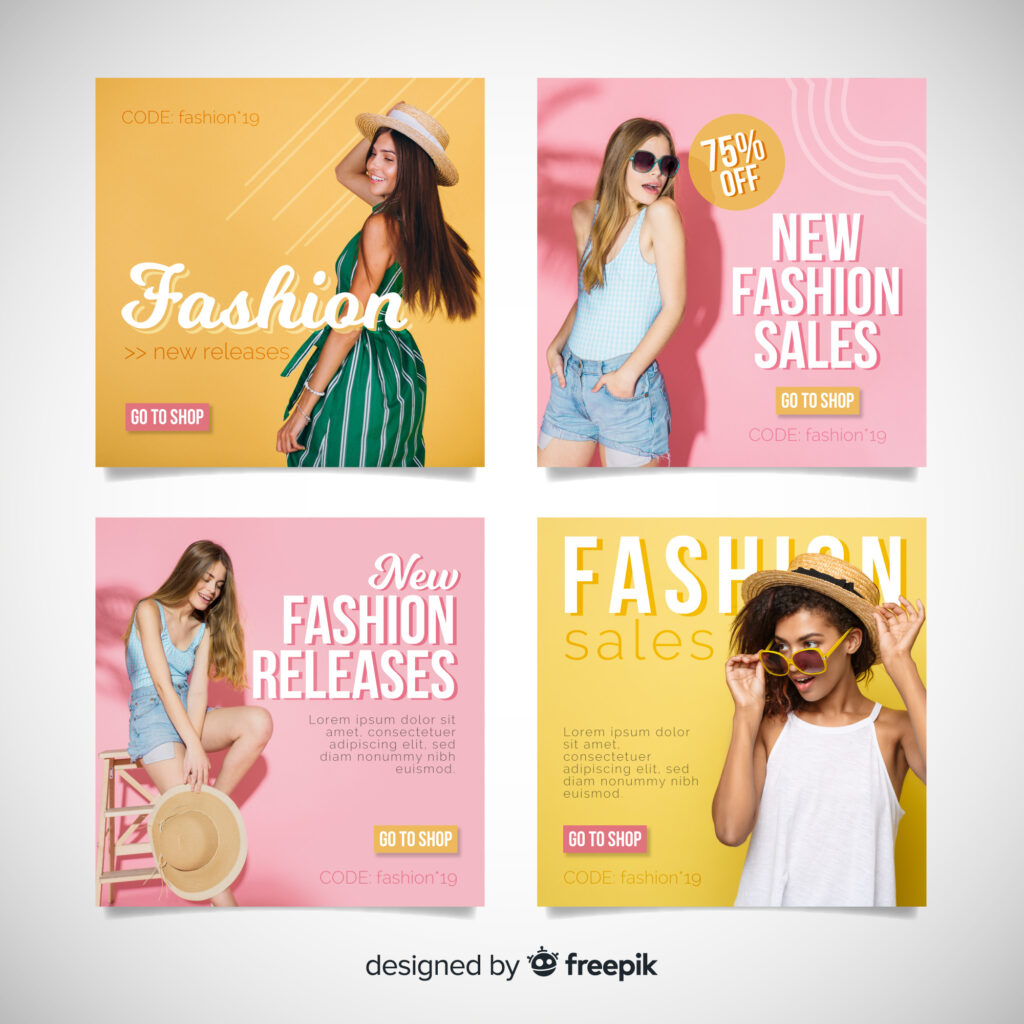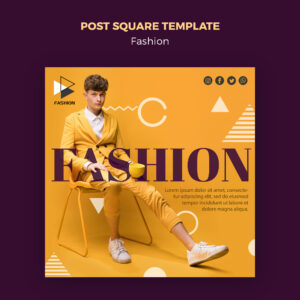The Impact of Social Media on Fashion: A Revolution in the Industry in 2025
Social media has changed the way we interact with fashion. It has created new opportunities for designers, influencers, and consumers to connect and share ideas. Social media platforms like Instagram, TikTok, and YouTube have become essential tools for the fashion industry.

The Impact of Social Media on Fashion:
When social media first emerged, no one could have foreseen the immense impact it would have on so many facets of society, globally. From what was originally a humble means of communication, to a multi-billion dollar behemoth, today social media users can build an entire career solely from their online behaviour. At the centre of all the business opportunities that have been gleaned from social media, is social networking, with none so intertwined as the fashion industry.
The fashion industry has undergone a significant transformation in recent years, and social media has played a crucial role in this revolution. Social media platforms such as Instagram, Facebook, and Twitter have become essential tools for fashion designers, brands, and influencers to showcase their work, connect with their audience, and promote their products.
The Rise of Social Media in Fashion
The Impact of Social Media on Fashion has been a game-changer for the fashion industry, providing a platform for designers and brands to showcase their collections, share their creative processes, and engage with their audience. According to a report by Pew Research Center, 71% of online adults aged 18-29 use social media to stay up-to-date with the latest fashion trends.
Influencer Marketing: A Key Driver of Fashion Sales
Influencer marketing has become a key driver of fashion sales, with influencers such as Chiara Ferragni and Olivia Palermo having millions of followers on social media. These influencers have become style icons, and their endorsements can make or break a fashion brand. According to a report by Influencer Marketing Hub, the influencer marketing industry is projected to reach $24.1 billion by 2025.
Social Media Platforms: A Fashionista’s Paradise
Social media platforms such as Instagram, Facebook, and Twitter have become essential tools for fashion enthusiasts to stay up-to-date with the latest fashion trends. These platforms provide a wealth of information on fashion, from style tips and trends to product reviews and recommendations.
Instagram: With over 1 billion active users, Instagram is a fashionista’s paradise. The platform is visually driven, making it ideal for fashion brands to showcase their products and collections.
Facebook: With over 2.7 billion active users, Facebook is a powerful platform for fashion brands to connect with their audience and promote their products.
Twitter: With over 330 million active users, Twitter is a great platform for fashion brands to share their latest news, trends, and promotions.
The Impact of Social Media on Fashion Designers
Social media has had a significant impact on fashion designers, providing them with a platform to showcase their work, connect with their audience, and promote their products. According to a report by Fashionista, 75% of fashion designers use social media to promote their brands and connect with their audience.
The Future of Fashion and Social Media
The future of fashion and social media is exciting and uncertain. As social media platforms continue to evolve, we can expect to see new trends and innovations emerge. According to a report by Business Insider, the use of artificial intelligence and virtual reality in fashion is expected to increase in the coming years.
The impact of social media on fashion has been significant, providing a platform for designers, brands, and influencers to showcase their work, connect with their audience, and promote their products. As social media continues to evolve, we can expect to see new trends and innovations emerge in the fashion industry.

Influencers and Trends

Social media influencers have become key players in the fashion industry. They have millions of followers and can promote brands and trends to a large audience. Influencers like Chiara Ferragni and Olivia Palermo have built their careers on social media and have become household names.
Social media has also created new trends and styles. The athleisure trend, for example, was popularized on social media platforms like Instagram and TikTok. The trend involves wearing athletic clothing as everyday wear, and it has become a staple in many people’s wardrobes.

The athleisure trend
Designers and Social Media
Designers are also using social media to promote their brands and connect with consumers. They are using platforms like Instagram and YouTube to showcase their designs and share their creative processes. Designers like Marc Jacobs and Alexander Wang have large followings on social media and use these platforms to engage with their fans.
The Impact of Social Media on Consumer Behavior The athleisure trend
Social media has also changed the way consumers interact with fashion. Consumers are now more likely to discover new brands and trends on social media than through traditional advertising. They are also more likely to purchase clothing and accessories online, rather than in physical stores.
The Future of Fashion and Social Media
The future of fashion and social media is exciting and uncertain. As social media platforms continue to evolve, we can expect to see new trends and styles emerge. We can also expect to see more designers and influencers using social media to promote their brands and connect with consumers.
Social media has had a significant impact on the fashion industry. It has created new opportunities for designers, influencers, and consumers to connect and share ideas. As social media continues to evolve, we can expect to see new trends and styles emerge, and the fashion industry will continue to adapt and change.
Many fashion houses hire influencers and social media personalities to promote their brands and products. This is a common practice in the fashion industry, and it’s known as influencer marketing.
Influencers have a large following on social media platforms, and they can help fashion houses reach a wider audience. They can showcase the brand’s products, share their experiences, and provide feedback to their followers. This can help increase brand awareness, drive sales, and build a loyal customer base.
Why do fashion houses hire influencers?

Reach a wider audience: Influencers have a large following, and they can help fashion houses reach a wider audience.
Build brand awareness: Influencers can help increase brand awareness by showcasing the brand’s products and sharing their experiences.
Drive sales: Influencers can help drive sales by promoting the brand’s products and providing affiliate links.
Build credibility: Influencers can help build credibility for the brand by sharing their positive experiences and feedback.
How do fashion houses work with influencers?
Sponsored posts: Fashion houses pay influencers to create sponsored posts featuring their products.
Product collaborations: Fashion houses collaborate with influencers to create limited-edition products or collections.
Brand ambassadors: Fashion houses appoint influencers as brand ambassadors to represent the brand and promote its products.
Event hosting: Fashion houses host events and invite influencers to attend and promote the brand’s products.
Examples of fashion houses working with influencers
Chanel: Chanel has worked with influencers like Kristen Stewart and Pharrell Williams to promote

its products.

Gucci: Gucci has worked with influencers like Harry Styles and Alessandro Michele to promote its products.
Louis Vuitton: Louis Vuitton has worked with influencers like Kanye West and Virgil Abloh to promote its products.

Influencer marketing is a common practice in the fashion industry, and many fashion houses hire influencers to promote their brands and products. Influencers can help increase brand awareness, drive sales, and build a loyal customer base. By working with influencers, fashion houses can reach a wider audience and build credibility for their brand.
Creating Successful New Trends: Thumb Rules to Follow
To make new trends a success, follow these key guidelines:
Understand Your Audience: Know your target audience’s preferences, needs, and behaviours.
Be Authentic and Unique: Create a unique and authentic trend that stands out from existing ones.
Keep it Simple and Accessible: Make the trend easy to understand and accessible to a wide audience.
Use Social Media Effectively: Leverage social media platforms to promote the trend and engage with your audience.
Collaborate with Influencers: Partner with influencers who have a large following and can help promote the trend.
Create a Sense of Urgency: Create a sense of urgency around the trend to encourage people to adopt it quickly.
Be Consistent: Consistently promote the trend across all channels to build momentum and keep it top of mind.
Monitor and Adjust: Continuously monitor the trend’s performance and adjust your strategy as needed.
Additional Tips
Stay Up-to-Date with Industry Trends: Stay informed about the latest industry trends and incorporate them into your strategy.
Use High-Quality Visuals: Use high-quality visuals to showcase the trend and make it more appealing.
Encourage User-Generated Content: Encourage users to create and share their own content related to the trend.
Offer Incentives: Offer incentives, such as discounts or exclusive access, to encourage people to adopt the trend.
Be Patient: Building a successful trend takes time, so be patient and don’t get discouraged if it doesn’t take off immediately.
By following these thumb rules and tips, you can increase the chances of making your new trend a success. Remember to stay focused, be patient, and continuously monitor and adjust your strategy to ensure the trend resonates with your audience.
Deciding Realistic Price Tags to Capture the Market
Deciding realistic price tags is a crucial step in capturing the market. Here are the key factors to consider:
Cost of Production: Calculate the cost of producing the product, including materials, labour, and overheads.
Market Research: Conduct market research to understand the prices of similar products in the market.
Target Audience: Identify the target audience and their willingness to pay for the product.
Competition: Analyze the competition and their pricing strategies.
Value Proposition: Determine the unique value proposition of the product and how it differentiates from others in the market.
Pricing Strategy: Choose a pricing strategy that aligns with the business goals, such as penetration pricing, skimming, or competitive pricing.
Psychological Pricing: Consider the psychological impact of pricing on consumers, such as pricing at $9.99 instead of $10.
Discounts and Promotions: Plan for discounts and promotions to incentivize sales and drive revenue.
Pricing Strategies
Cost-Plus Pricing: Add a markup to the cost of production to determine the price.
Value-Based Pricing: Price based on the perceived value of the product to the customer.
Competitive Pricing: Price similar to or slightly lower than the competition.
Penetration Pricing: Price low to quickly gain market share and drive sales.
Skimming Pricing: Price high to maximize profits and create a premium image.
Tools and Techniques
Break-Even Analysis: Calculate the point at which the product becomes profitable.
Sensitivity Analysis: Analyze how changes in pricing affect sales and revenue.
Conjoint Analysis: Understand how consumers trade off different product features and pricing.
Surveys and Focus Groups: Gather feedback from customers to understand their pricing expectations.
Deciding realistic price tags requires a thorough understanding of the market, target audience, and competition. By considering these factors and using various pricing strategies and tools, businesses can set prices that capture the market and drive revenue.
Publicity Budget Allocation for Famous Brands
The minimum percentage kept for publicity by famous brands varies depending on the industry, company size, and marketing strategy. However, here are some general guidelines:
Average Publicity Budget: 5-15% of the total revenue is allocated for publicity and advertising.
Industry-Specific Allocation:
Fashion and Beauty: 10-20% of revenue
Technology and Electronics: 5-15% of revenue
Food and Beverage: 5-10% of revenue
Automotive: 5-15% of revenue
Digital Marketing Allocation: 20-50% of the total publicity budget is allocated for digital marketing, including social media, search engine optimization, and online advertising.
Influencer Marketing Allocation: 5-15% of the total publicity budget is allocated for influencer marketing, depending on the brand’s influencer marketing strategy.
Breakdown of Publicity Budget
Advertising: 30-50% of the publicity budget
Digital Marketing: 20-40% of the publicity budget
Influencer Marketing: 5-15% of the publicity budget
Event Marketing: 5-10% of the publicity budget
Public Relations: 5-10% of the publicity budget
Content Creation: 5-10% of the publicity budget
Examples of Famous Brands’ Publicity Budget Allocation
Coca-Cola: 10-15% of revenue (around $4-6 billion)
Apple: 5-10% of revenue (around $10-20 billion)
Nike: 10-15% of revenue (around $3-5 billion)
Procter & Gamble: 10-15% of revenue (around $10-15 billion)
Note: These figures are estimates and may vary depending on the source and methodology used.
Sources:
Pew Research Center: “Social Media Use in 2022”
Forbes: “The Impact of Social Media on Fashion”
Vogue: “The Future of Fashion and Social Media”

